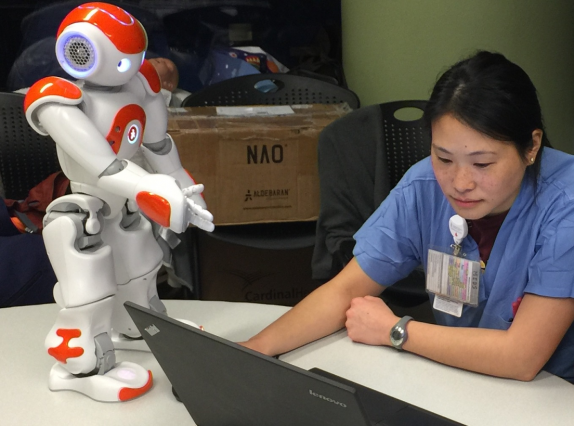Artificial intelligence system helps Navy select the best tactics for ship defense

Consider a naval ship that needs to protect itself from an enemy's missiles. In such a situation, human operators would protect their ship by deploying techniques that thwart an enemy's missile. For these operators, figuring out which countermeasure to deploy — should they send an interceptor to take the missile down or use radio frequency signals to confuse it? — can be challenging, as operators also need to consider the costs, timing, and laws related to different responses. As the size of a battle increases and new variables are introduced, the task of deciding which countermeasures to deploy, and when to deploy them, becomes more difficult.
To address these issues, researchers in the Air, Missile, and Maritime Defense Technology Division at Lincoln Laboratory developed the Human-Machine Collaborative Optimization via Apprenticeship Scheduling (COVAS) system. COVAS uses machine learning algorithms to provide users with scheduling solutions that help them make decisions about the completion of specific tasks. These solutions mirror the ones that humans would make if they had time to consider all of the available options. COVAS is the first and only algorithm to provide real-time ship defense solutions by learning from human experts.
Matthew Gombolay, a former staff member, started the project in 2015 as part of his doctoral thesis at MIT. In its early stages, COVAS was tested in the labor ward at Beth Israel Deaconess Medical Center, where the artificial intelligence system made recommendations such as where to move patients or which nurse should be assigned to a C-section. After joining Lincoln Laboratory in 2016, Gombolay applied COVAS to a dataset that had been collected by Strike Group Defender — a serious game developed by the Advanced Concepts and Technologies Group to help train sailors in ship defense. The data showed the decisions that players made as they responded to missile threats in the game.

Developing efficient scheduling software to help users decide how to complete technical tasks, such as countermeasure deployment, has been a difficult task for the U.S. Navy and other organizations. Before COVAS, organizations would bring in a software developer to extensively interview industry-specific experts to understand the relevant policies and standards that an end user must take into consideration when completing a task. This process is time consuming and often does not produce software that mirrors human decision making.
"Engineers and researchers alike fail to develop algorithms that actually meet the end user's needs because they try to replace the user's natural decision-making process with a synthetic one and because users cannot adequately describe their own natural decision-making process," said Sung-Hyun Son, leader of the Ballistic Missile Defense System Integration Group, who helped Gombolay apply COVAS to a U.S. Navy resource-allocation project.
COVAS learns human operational behavior in real time by observing data input that comes from training schedules. These schedules detail specific actions that are taken (in the case of a naval battle, when and where a countermeasure is deployed) and actions that are not taken. COVAS only compares two actions at a time: the action a user took and the action a user did not take. These comparisons, known as pairwise comparisons, help COVAS predict which actions a user would take in a given situation and rationalize how resources will be best deployed.
"By only considering pairs of actions at a time, rather than all actions at once, COVAS is not limited to learning actions in environments with the same number of available actions," Son said. "For example, I can choose an umbrella, jacket, poncho, or sweater if it rains. Say I choose umbrella given it rains. From that one decision, we can infer umbrella over poncho, umbrella over jacket, umbrella over sweater, no poncho over umbrella, no jacket over umbrella, and no sweater over umbrella. From that one decision, we got six training examples instead of a single datum with classical approaches."
After learning from demonstrations of small problems, COVAS applies the sets of rules it developed from witnessing those demonstrations to more complex problems that have a greater number of variables to be considered. This capability allows the system to respond to both small- and large-scale problems without needing to observe additional behavior.
COVAS then provides users with a suggested schedule of actions that will help them solve their current problem. The real-time COVAS solution is based on a branch-and-bound approach. With this approach, the users receive a standard assessment score of how optimal the solution is, thus allowing the users to form their own opinions of the solution's reliability before deciding on their course of action. The branch-and-bound approach additionally presents COVAS’s solution in a decision tree model. This model illustrates a course of action based on the statistical probability that the selected action mirrors the human decision-making process so that users can easily interpret how the system came to its conclusion.
Going forward, Gombolay will work alongside staff member Reed Jensen to mature the technology before proposing it as a Future Naval Capability to the Office of Naval Research.
COVAS was awarded a 2018 R&D 100 Award, presented by R&D Magazine to technologies judged to be the 100 most innovative of the year.